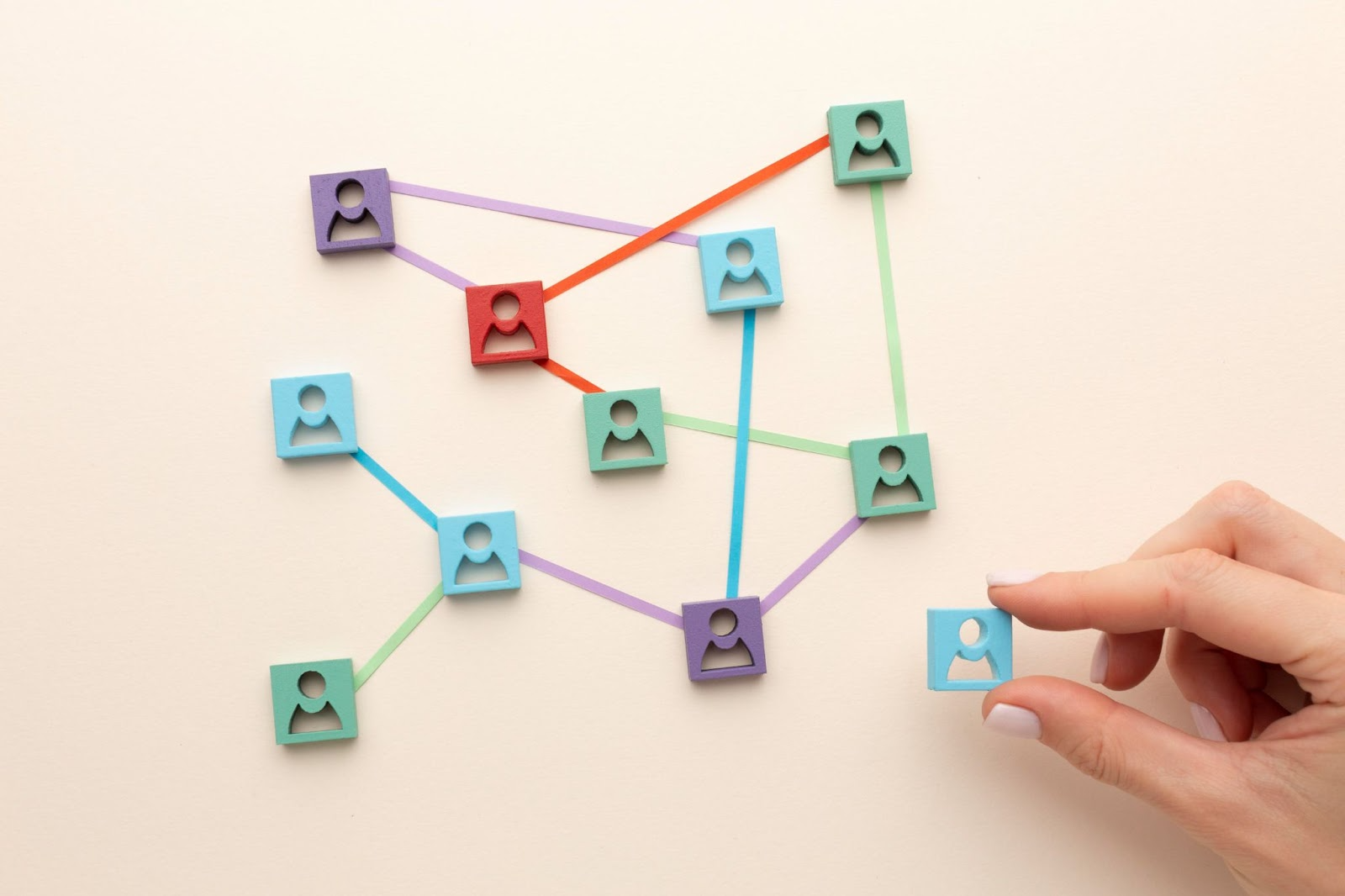For years, B2B marketing teams have focused on producing fresh content like blogs, whitepapers, webinars, and podcasts. But today, content creation alone no longer guarantees growth. Buyers are busier, channels are more crowded, and algorithms reward quality and consistency over sheer quantity.
This shift has created a new opportunity: content repurposing. This means taking existing assets and transforming them into new formats for different platforms and stages of the buyer journey. Done well, content repurposing can multiply your reach, boost ROI, and shorten the path from awareness to purchase.
As a leading content marketing agency in Singapore, we’ve seen firsthand how B2B companies can unlock growth by building a systematic repurposing framework.
The Content Repurposing Advantage
In the past, more content meant more leads. But today’s B2B buyers are overwhelmed with information. AI-powered research tools, peer review sites, and communities make it easier for them to self-educate, but harder for brands to stand out.
The winners in 2025 aren’t those creating the most content. They’re those extracting the most value from the content they already have.
Repurposing allows you to:
- Maximise ROI: Get 3–10x more mileage from each asset.
- Expand Reach: Engage prospects across channels and formats they prefer.
- Stay Consistent: Reinforce your brand message at every stage of the buyer journey.
For example, a single whitepaper can become:
- A blog series for SEO
- A LinkedIn carousel for awareness
- A webinar for engagement
- An email nurture series for lead conversion
A good content marketing agency will incorporate these repurposing workflows into your strategy from day one.

A Framework for B2B Growth Through Content Repurposing
At our content marketing agency in Singapore, we’ve helped dozens of B2B companies transform scattered content efforts into predictable growth systems. The secret isn’t creating more content, it’s creating smarter workflows that boost the impact of what you already have.
Our proven five-step framework looks like this:
1. Audit & Inventory
Before you repurpose anything, you need to know what you’re working with. We conduct a full audit of your content library, including blogs, whitepapers, videos, webinars, and case studies, and map each piece to your buyer journey stages: awareness, consideration, and decision. This helps identify hidden gems you’ve already created and gaps you need to fill.
Example: A webinar recorded last year might still contain insights that are perfect for a LinkedIn post series or an industry email newsletter.
2. Prioritise by Impact
Not all content deserves equal attention. We rank assets based on engagement metrics like traffic, downloads, and shares, as well as evergreen value and strategic fit with your current business goals. This way, you focus on repurposing the 20% of content that can deliver 80% of the results.
Example: Instead of repurposing a low-performing blog article, start with a high-performing report that already resonates with your audience.
3. Adapt for Channels & Personas
Each platform and audience segment has different expectations. We reformat your content to fit where your buyers spend time, whether it’s LinkedIn, YouTube, email, events, or even internal sales decks. We also adjust tone, visuals, and CTAs to ensure relevance for different personas, like decision-makers vs. technical evaluators, for instance.
Example: A dense whitepaper can become an infographic for LinkedIn, a short explainer video for YouTube, and a sales slide deck for your reps. All these tell the same story in different ways, for different audiences.
4. Automate & Systematise
Consistency is where most B2B companies struggle. We use templates, scheduling tools, and even AI to make repurposing a repeatable process, not a one-off project. This keeps your brand voice and visuals consistent while saving time and internal resources.
Example: A monthly “content repurposing sprint” can automatically generate 5–10 new assets from existing content without burning out your marketing team.
5: Measure & Optimise
Repurposing isn’t a “set and forget” endeavour. We track reach, engagement, and pipeline influence from every repurposed asset to see what actually drives business results. Then refine your approach, doubling down on what works and tweaking what doesn’t.
Example: If LinkedIn carousels outperform email nurtures for a specific persona, shift more repurposed content into LinkedIn and test new formats.
Repurposing for Different Stages of the Buyer Journey

One of the biggest mistakes B2B companies make is treating content as if it serves everyone the same way. In reality, a CFO exploring solutions for the first time needs something very different from a procurement manager who’s about to sign a contract. Repurposing content allows you to meet each buyer exactly where they are in their journey, without having to create everything from scratch.
Here’s how we approach it at our content marketing agency:
Awareness Stage
At this point, prospects are just starting to identify a problem or opportunity. They’re not looking for your product yet; they’re looking for insight.
- Repurpose high-value research reports into infographics, explainer videos, or blog posts that simplify complex data.
- Slice key insights into social posts or LinkedIn carousels to reach broader audiences.
- Host a webinar or podcast episode based on the report to establish thought leadership.
Goal: Build trust and authority while increasing your brand’s visibility in the 95% of the market that’s not yet in buying mode.
Consideration Stage
Prospects know they have a problem and are evaluating possible solutions. They’re comparing vendors, exploring features, and gathering information for stakeholders.
- Repurpose webinars into bite-sized clips with clear CTAs pointing to deeper resources like whitepapers or case studies.
- Turn long-form blog posts into email nurture sequences tailored to specific personas or industries.
- Create checklists, frameworks, or comparison guides from existing content to help prospects evaluate options.
Goal: Educate and nurture prospects so your company stays top-of-mind as they research and shortlist vendors.
Decision Stage
Here, prospects are close to making a purchase decision. They need to justify their choice internally and reduce perceived risk.
- Rework case studies into ROI calculators, proof-of-concept demos, or sales enablement slides that speak to business outcomes.
- Transform customer testimonials into short video clips or one-page “success snapshots” for decision-makers.
- Create FAQ sheets or objection-handling guides from sales conversations or webinars.
Goal: Equip both your champion and the broader buying committee with content that makes the decision easy and defensible.
By deliberately mapping repurposed assets to each stage of the buyer journey, you’re not only increasing your content’s lifespan but also creating a seamless experience for your audience.
This is one of the biggest reasons our content marketing agency builds repurposing frameworks: it’s not just about efficiency, it’s about relevance and timing; two of the most powerful levers in B2B marketing today.
Common Mistakes B2B Companies Make With Content Repurposing
Many B2B companies understand the value of content repurposing, but still struggle to do it well. Repurposing isn’t just “recycling”, it’s a strategic process that requires planning, alignment, and measurement. Without a clear framework, even strong content assets can underperform.
Here are the most common mistakes we see, and how a skilled content marketing agency in Singapore can help you avoid them:
How a Content Marketing Agency Avoids These Pitfalls
A skilled content marketing agency designs repurposing workflows upfront. That means:
- Building multi-format content calendars.
- Creating channel-specific templates to speed execution.
- Mapping every repurposed piece to your buyer journey and business goals.
- Reporting on performance and optimising over time.
This way, every content asset works harder, lasts longer, and drives measurable growth.

How Our Content Marketing Agency Helps B2B Companies Scale Content for Growth
Most B2B teams already have plenty of content; they just aren’t squeezing the full value out of it. That’s where we come in. As a content marketing agency in Singapore, we’ve built repeatable systems to help organisations stop “one-and-done” publishing and start compounding results.
We help B2B organizations:
- Audit and Prioritise Content for Repurposing
We conduct a full content inventory across blogs, webinars, whitepapers, and sales materials. Then we identify the high-impact assets most likely to drive awareness, engagement, or pipeline influence. - Create High-Impact Assets Tailored to Multiple Channels
Instead of copy-pasting, we redesign and reframe your best content for LinkedIn, email campaigns, YouTube, sales decks, and more, ensuring every format is optimised for its audience and channel. - Automate Repurposing Workflows to Save Time and Cost
Using templates, AI, and scheduling tools, we help your team scale repurposing without losing brand consistency. This means less manual work, faster turnaround, and more consistent output. - Measure ROI with Clarity and Confidence
We set clear KPIs for each repurposed asset and connect them to revenue outcomes so you’ll know exactly what’s working and where to invest next.
Craft Content That Works Harder for You
In 2025, B2B growth doesn’t come from simply creating more; it comes from maximising the potential of your existing content.
Brew Interactive specialises in turning content creation into content repurposing systems that compound over time. Our team brings the expertise, processes, and technology needed to build a smarter, more efficient content engine, whether you’re a Singapore-based enterprise or a regional B2B brand.
If you’re ready to stop chasing one-off campaigns and start scaling content for measurable growth, let’s talk.
Frequently Asked Questions
1. Do you only offer content repurposing or full content creation as well?
We do both. Many clients engage us to repurpose their existing content, but we also create original, high-impact assets from scratch, such as whitepapers, blog posts, videos, LinkedIn campaigns, and more. This means we can build a complete content marketing system tailored to your growth goals.
2. Can you help us localise or regionalise content for different markets?
Yes. As a content marketing agency in Singapore with regional experience, we help clients adapt content for different markets and languages across Southeast Asia. We ensure messaging, tone, and visuals resonate locally while maintaining your global brand consistency.
3. How do you collaborate with our in-house marketing or sales teams?
We act as an extension of your team. For some clients, we handle strategy and execution end-to-end. For others, we work alongside their internal marketers, providing frameworks, templates, and best practices while they handle distribution. This flexible approach ensures seamless integration into your existing processes.
4. Do you provide industry-specific content expertise?
Yes. We have worked with B2B companies in industries like technology, manufacturing, logistics, finance, and healthcare. We combine domain knowledge with content strategy, so your assets are not only engaging but also credible and industry-relevant.
5. Can you work on both one-off projects and long-term retainers?
Yes. Some clients engage us for specific campaigns, like repurposing a product launch webinar into a multi-channel campaign, while others work with us on an ongoing basis to build a sustainable content engine. We’re flexible in structuring engagements based on your goals and bandwidth.





